A l’aube de sa retraite, toute l’équipe de Vichy Enchères tenait à rendre hommage à Jean-François Raffin, avec qui l’Hôtel des Ventes a collaboré de 1995 à aujourd’hui. Jean-François Raffin a exercé pendant plus de cinquante ans le métier d’abord de luthier, puis d’archetier, avant de se consacrer exclusivement à l’expertise – toujours avec bonheur et réussites. Internationalement reconnu comme une référence dans le champ de l’expertise d’archets, Jean-François Raffin est le digne descendant de l’archèterie française, transmise par Bernard Millant pendant dix-sept ans. Le 30 novembre 2023, à l’occasion de notre vente de prestige d’instruments du quatuor, un archet de Jean-François Raffin sera vendu : un prétexte supplémentaire pour revenir sur la carrière exceptionnelle de cet homme resté humble malgré le succès.
C’est en étudiant la guitare classique que Jean-François Raffin prend conscience qu’il souhaite devenir luthier.
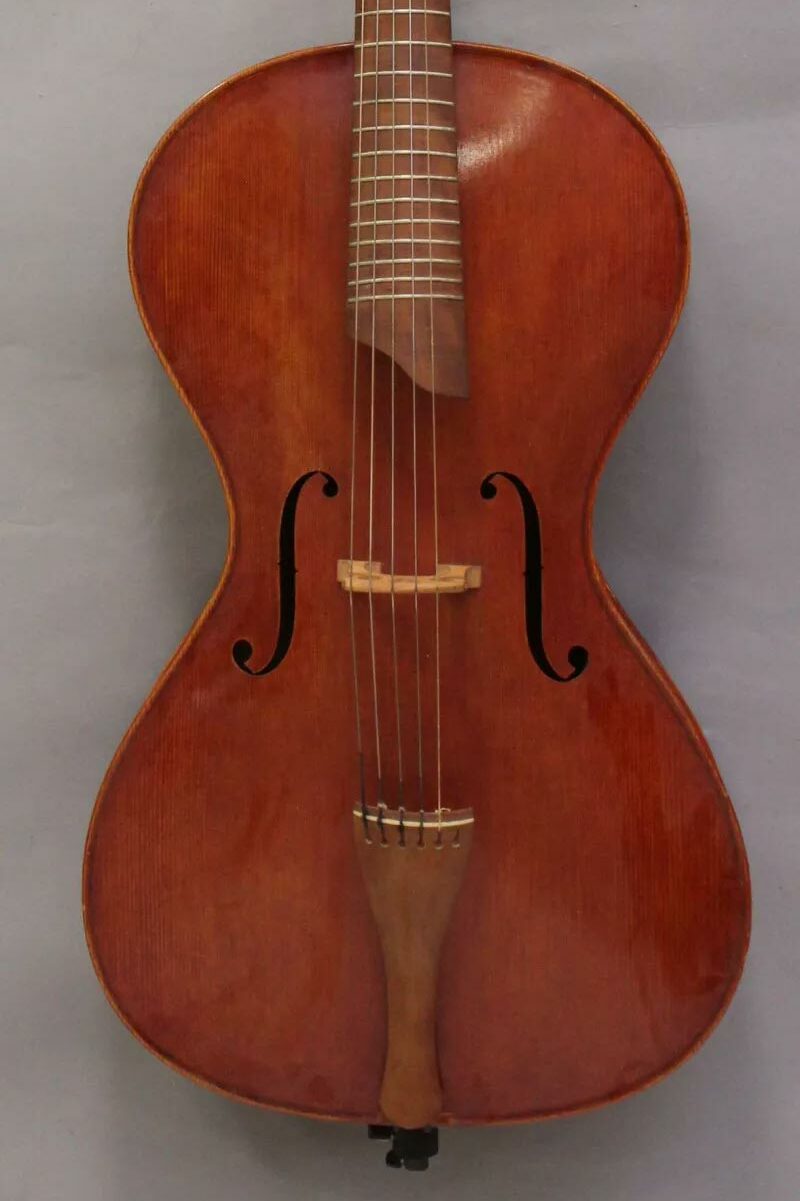
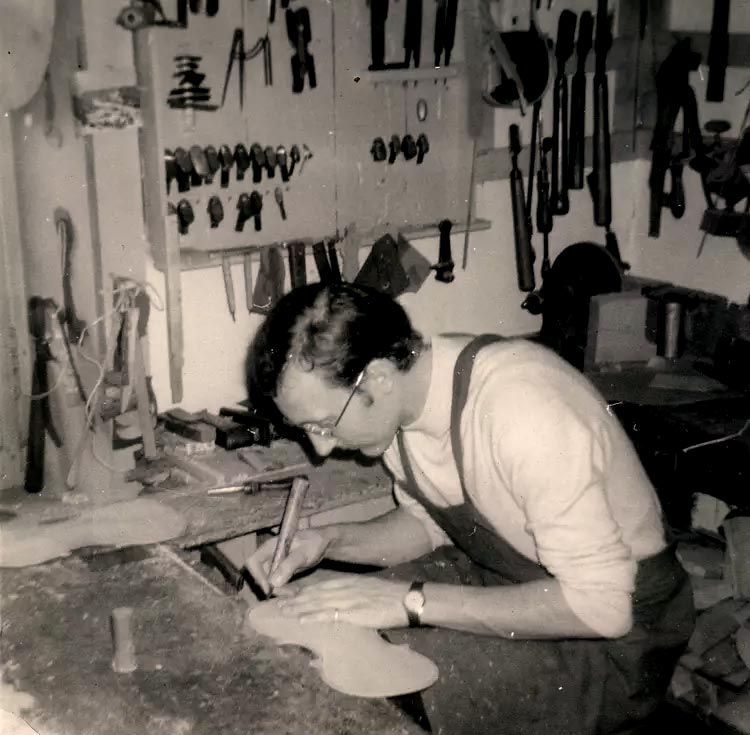
A l’époque, il est nécessaire de se former auprès d’un maître en rejoignant son atelier, ce qui n’était pas chose aisée – les luthiers de Mirecourt n’acceptant plus que quelques apprentis.
C’est grâce à Jacques Camurat que le jeune Jean-François parvient finalement, après de nombreux courriers restés sans réponse, à trouver une place d’apprenti chez Apparut et Hilaire, rue Sainte-Cécile, alors gérée par la veuve de Paul Hilaire. Pensant fabriquer des guitares, c’est en réalité à la lutherie d’instruments du quatuor à cordes qu’il se forme, et avec joie. Le responsable de l’atelier, Jean Eulry, devient son maître et Jean-François Raffin lui en sera toujours reconnaissant.
Au cours de cet apprentissage, il côtoie quatre autres apprentis, Berend Möller, Jean-Jacques Pages, Thomas Jansen et Patrice Taconné. Berend Möller était le fils de Max Möller, le plus important luthier des Pays-Bas. Ayant de bonnes relations avec Jean-François, il le présente un jour à son père qui entrevoit son talent et qui lui passera commande de trois archets miniatures avec des hausses et boutons en écaille et en or, copies de Peccatte, Tourte et Vuillaume, aujourd’hui disparus suite à un vol.
Jean Eulry eut une importance déterminante dans la carrière de Jean-François Raffin, que ce soit en ce qui concerne sa technique ou sa façon de concevoir le métier. Il en retint notamment une phrase qui conditionna son parcours :
“Reste toujours à ta place, c’est le mieux que tu puisses faire dans ton métier et tout au long de ta vie !”
Jean Eulry
Toute sa carrière professionnelle fut influencée par les enseignements d’Eulry et ses relations humaines.
A cette époque, Jean Eulry est l’un des meilleurs luthiers de sa génération et les maisons parisiennes s’arrachent ses instruments en blanc pour les vendre comme étant les leurs.
Son apprentissage touche à sa fin en juillet 1971 et Raffin quitte Mirecourt pour Paris, intégrant l’atelier d’Etienne Vatelot grâce à l’appui d’Eulry, qui voyait en lui l’un de ses meilleurs apprentis.
Comme symbole de respect et d’estime amicale et professionnelle entre Raffin et Eulry, ce dernier lègue à sa mort ses rabots de luthier à son ancien élève, à sa demande – rabots que Raffin confia récemment au musée de Mirecourt pour en assurer la pérennité.
“Il avait été pour moi une personne profondément humaine et très généreuse de coeur ! Et il m’a permis de réaliser mon rêve : devenir luthier, et ce dans les meilleures conditions possibles ! Je l’ai donc quitté avec un grand pincement au cœur.”
Jean-François Raffin
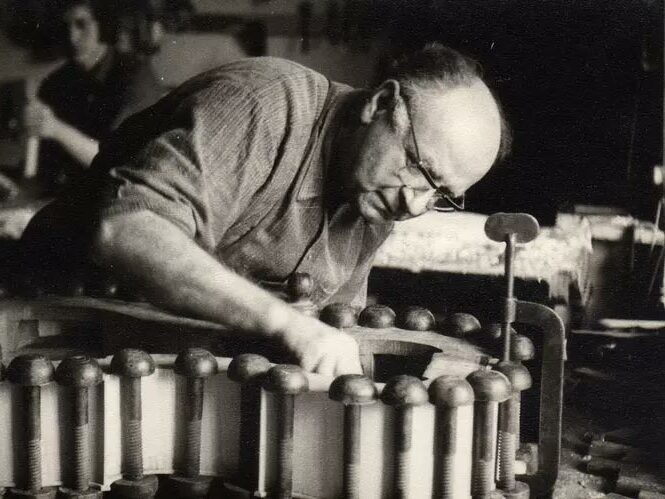
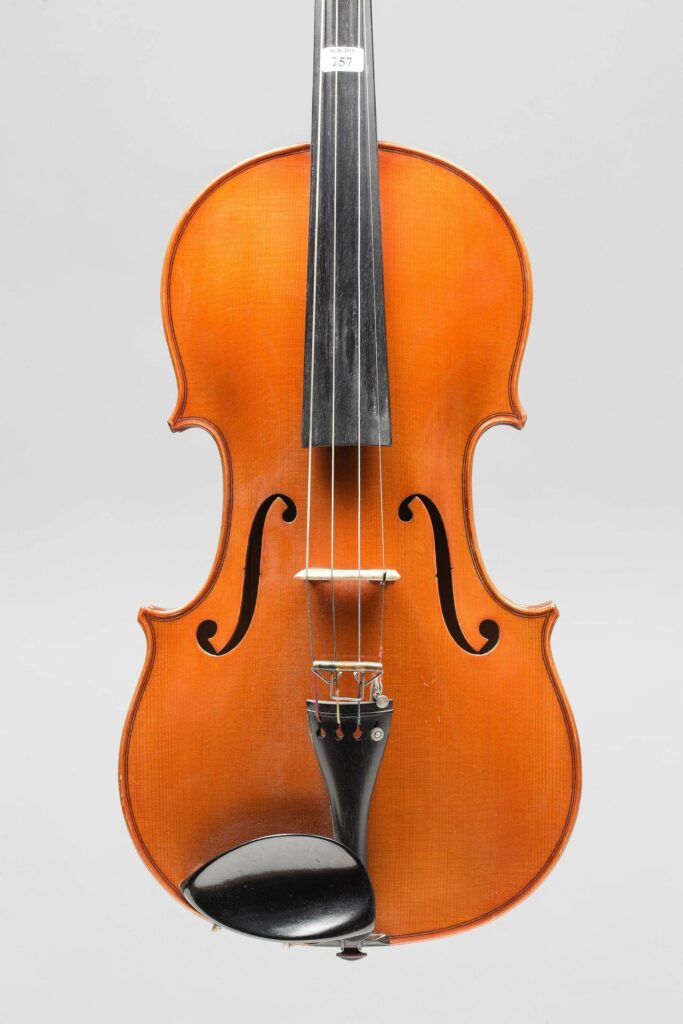
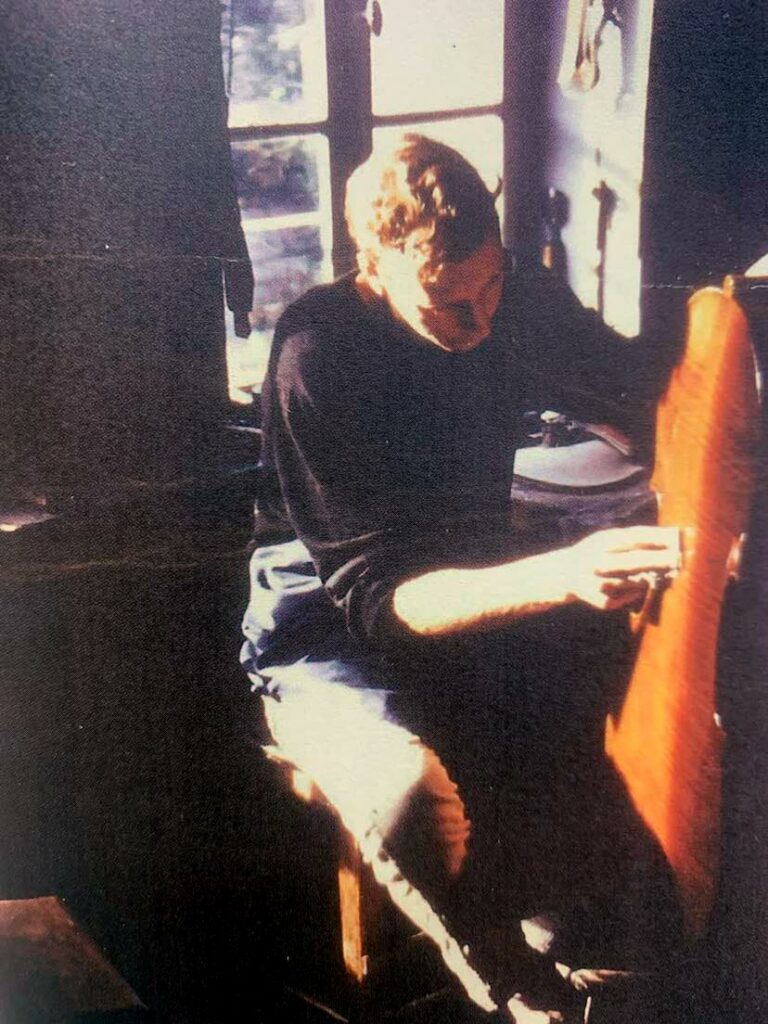
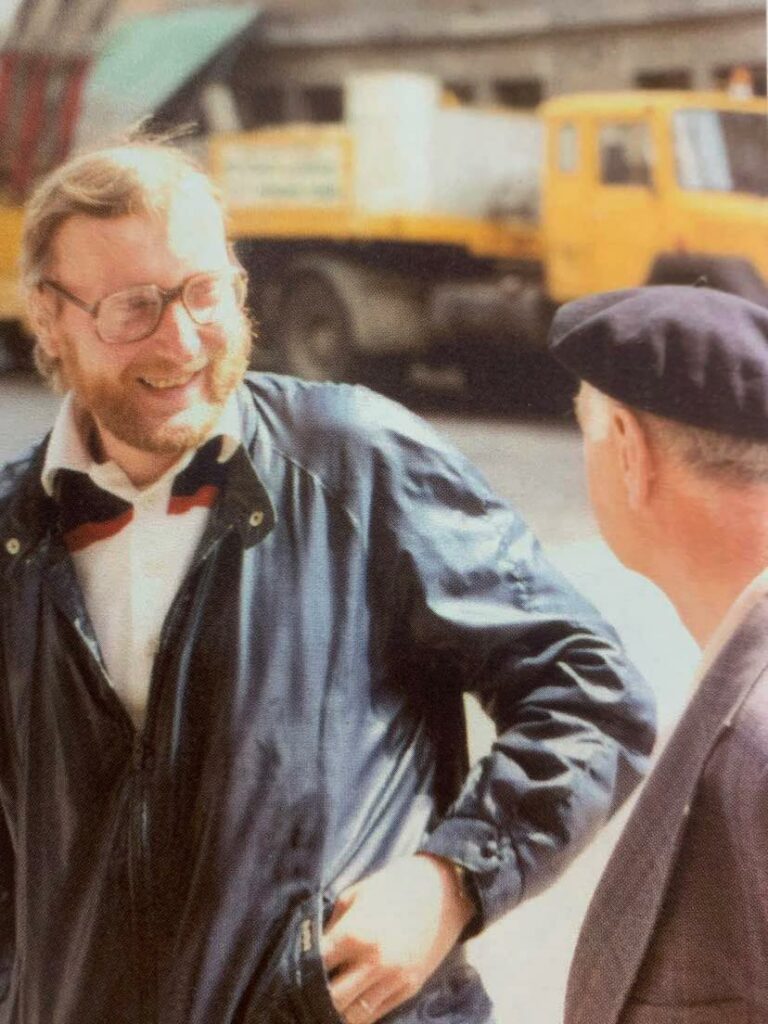
Un mois avant la fin de son apprentissage, en juin 1971, Jean-François Raffin s’inscrit au CAP de lutherie, ouvert pour la première fois aux luthiers apprentis.
Avec son ami Philippe Bodart, ils sont les deux seuls candidats sur toute la France à inaugurer le concours.
Admis tous les deux, ils sont ainsi les deux premiers apprentis luthiers de l’histoire diplômés de Mirecourt.
En septembre 1971, Jean-François Raffin gagne la capitale pour intégrer l’atelier d’Etienne Vatelot, aux places si convoitées. Sans surprise, le fonctionnement y est tout autre que chez Apparut-Hilaire. Le maître étant beaucoup moins présent, il n’est pas possible de l’observer travailler à volonté et, comme Jean-François avait pris cette habitude chez Jean Eulry, il en est déstabilisé. En outre, l’ambiance y est moins détendue, plus solennelle.
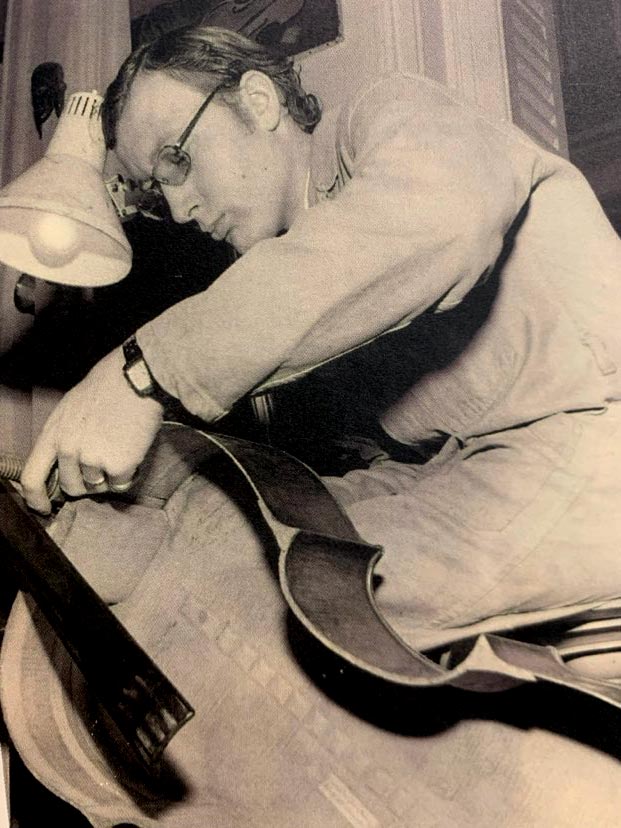
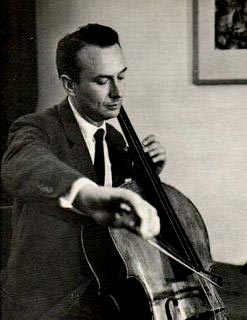
Toutefois, ce travail chez Vatelot est fort intéressant puisqu’il lui permet de rencontrer un grand nombre de musiciens renommés.
“Une autre situation m’était déplaisante dans cette maison : lorsqu’un grand musicien accompagnait Etienne dans l’atelier, plus personne n’osait bouger, et l’on aurait pu entendre une mouche voler ! (…) C’était très pesant et pas facile à vivre pour moi ! En revanche, avoir la chance de rencontrer les plus grands musiciens de cette époque était quelque chose de rare […] Cela m’a permis de garder un très bon souvenir de certains d’entre eux, comme Igor Oistrakh, ou Yehudi Menuhin dont la simplicité était extraordinaire et aussi Maurice Gendron […] Concernant Maurice Gendron, il me revient qu’Etienne m’avait demandé de lui faire une enture de tête sur son violoncelle muet, [il] avait été très satisfait de sa transformation [et il lui m’avait remis cet autographe] “Pour Jean-François Raffin qui sait faire sonner les violoncelles muets.””
Malgré le prestige et les opportunités que pouvaient offrir ce genre de places chez Etienne Vatelot, Jean-François Raffin prit la décision de ne rester qu’un an dans cet atelier et de rejoindre Bernard Millant.
Quelques années après avoir quitté l’atelier d’Etienne Vatelot, ce dernier lui fit décerner le Prix de la Couronne française, lors d’une soirée organisée au Pavillon d’Armenonville, au sein du bois de Boulogne. Jean-François Raffin y est élu à l’unanimité et siège alors à la table d’honneur, entouré de personnalités de haut rang, telles que S.L. le Roi Fouad d’Egypte, S.M. la Reine Fadila ou encore le Baron et la Baronne Hottinguer.
A cette occasion, Etienne Vatelot lui fait également le cadeau de lui exprimer son estime, – lui qui l’avait quitté dans des circonstances quelques peu délicates :
“Je vous présente la candidature de Jean-François Raffin, très bon archetier travaillant chez mon collègue Bernard Millant à Paris ! Il n’est ni de ma famille, ni un de mes amis; c’est simplement un artisan de grande qualité, très méritant et dont le travail est au meilleur niveau !”
Etienne Vatelot
Si Etienne Vatelot prend le soin de préciser que ses relations avec Jean-François Raffin sont purement professionnelles, c’est qu’il était de coutume que les lauréats soient, ou des amis, ou des membres de la famille des jurés.
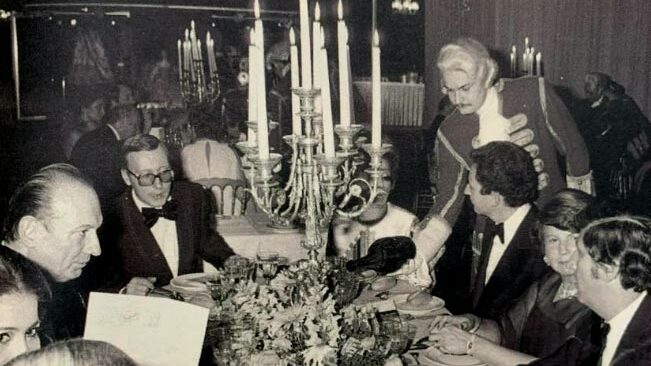
Après seulement six mois chez Etienne Vatelot, Jean-François Raffin demande une place à Bernard Millant qu’il connaît bien. Volontiers, celui-ci lui en assure une pour septembre 1972. Raffin quitte alors Vatelot après tout juste un an de travail à ses côtés.
L’atelier de Millant lui permet de se former à l’archèterie et de découvrir de nouveaux outils et matériaux, tels que le bois de pernambouc, beaucoup plus dur à façonner que l’épicéa ou l’érable. Mais, en réalité, il lui faut attendre quatre à cinq ans avant de commencer à fabriquer ne serait-ce que des copies de hausses ou à remplacer certains arrières de baguettes détériorées.
Jean-François Raffin déclare avoir eu l’envie de réaliser un archet de sa propre création en regardant travailler Bernard Millant pendant tout ce temps. Un jour, il se résout donc à acheter quelques baguettes chez Roger Gérôme et commence à fabriquer ses premiers archets. C’était le début d’une grande histoire qui ne s’arrêterait plus et qui le conduirait à s’améliorer progressivement et à gagner, précocement (il avait en effet peu d’expérience à ce moment là), la médaille d’argent au concours des Meilleurs Ouvriers de France, en 1979.
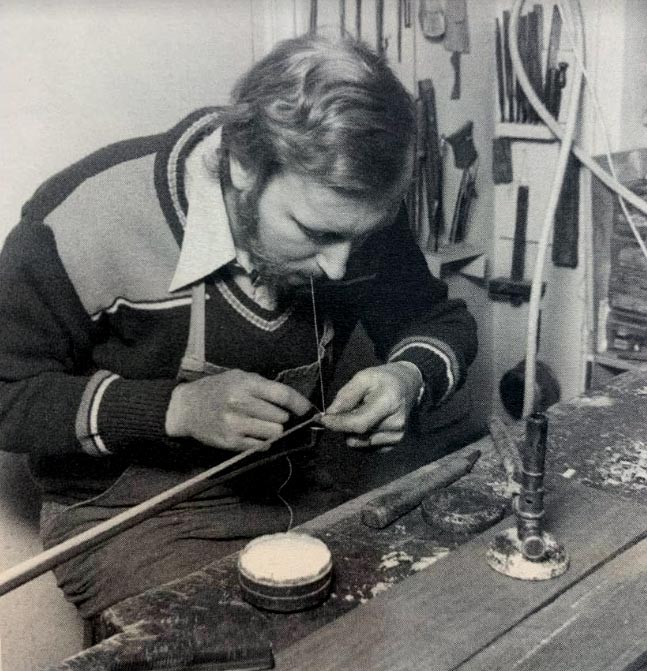
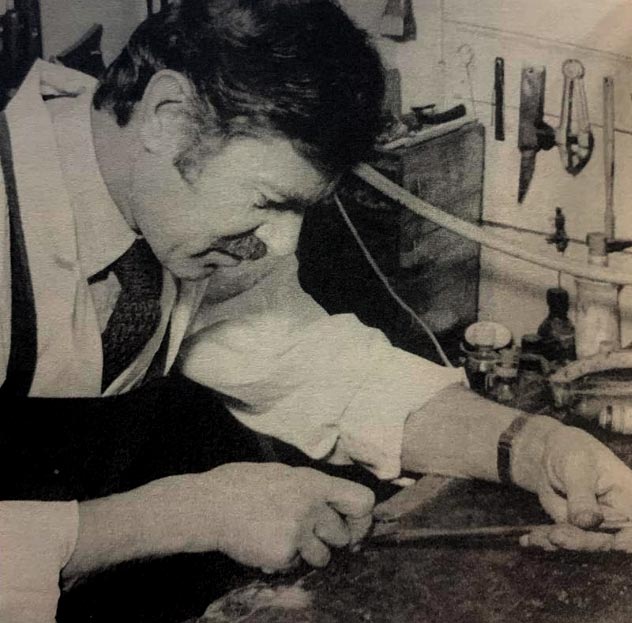
Après avoir passé dix-sept ans dans l’atelier de Bernard Millant, Raffin est totalement pétri de ce savoir-faire, ce qui lui permet de réaliser des archets prisés par une multitude de musiciens, tels que Philippe Muller – qui n’utilise plus que celui-ci -, Roland Daugareil, Michel Strauss, Pierre-Yves Lamarca, Suzanne Ramon ou encore Dong-Suk Kang. Il conçoit également deux quatuors d’archets avec des hausses en écaille et on or, l’un pour son ami Jean-Yves Rouveyre, l’autre pour son très bon collègue Roland Baumgartner.
“Pour ce second, je l’ai agrémenté avec des filets en or tout autour de ses hausses, si difficile à façonner !”
En remerciement et témoignage de gratitude, Jean-François Raffin réalise un archet spécialement conçu pour Bernard Millant, qui fut vendu lors de la dispersion de sa collection à Vichy Enchères en 2017. Le 30 novembre 2023, un intéressant archet d’alto de Jean-François Raffin, réalisé vers 2000 et signé « J.F. Raffin à Paris », sera présenté aux enchères à Vichy. Monté or, cet instrument offre un bel exemple d’un savoir-faire descendant directement de la pure tradition française de l’archèterie.
“Ces derniers temps, j’ai également réalisé que j’ai hérité d’une large partie de l’histoire de l’archèterie française, depuis son essor (à partir de 1750) jusqu’à Bernard Millant qui me l’a transmise.”
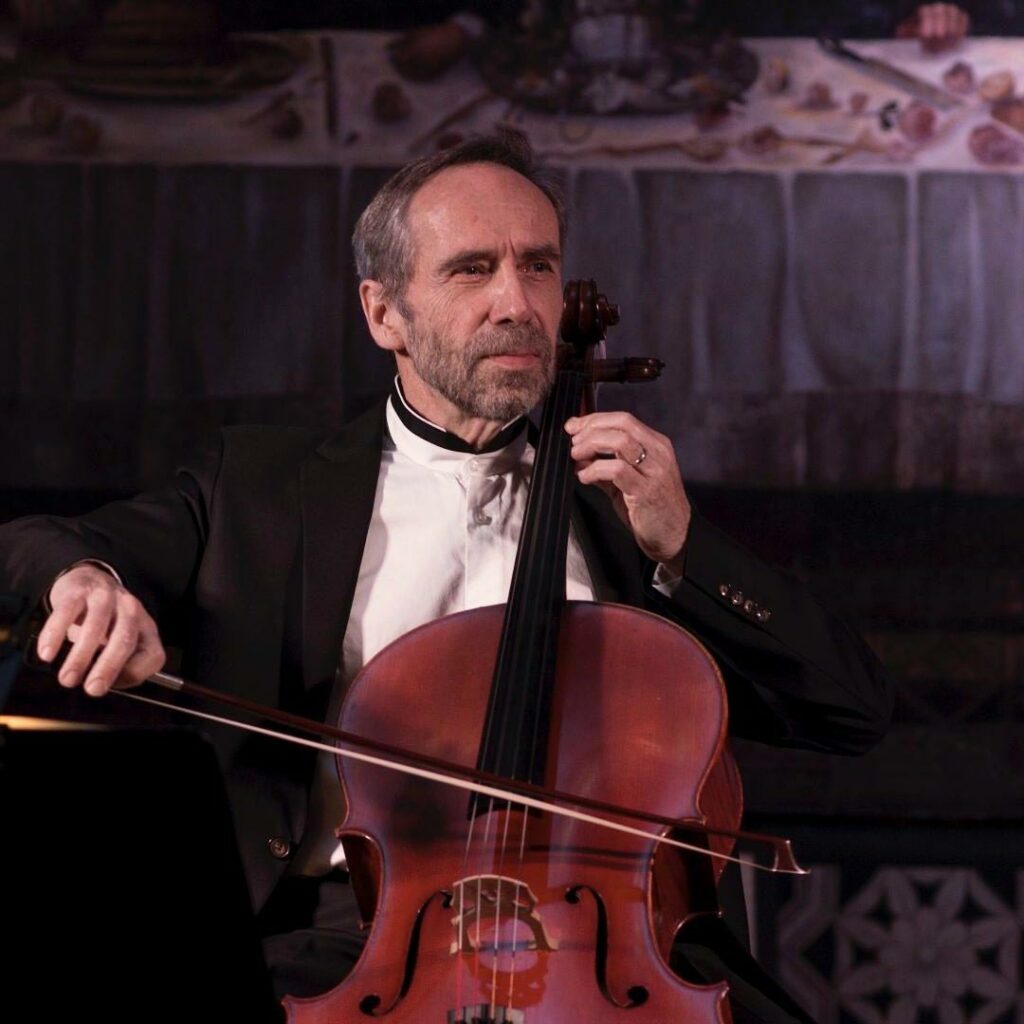
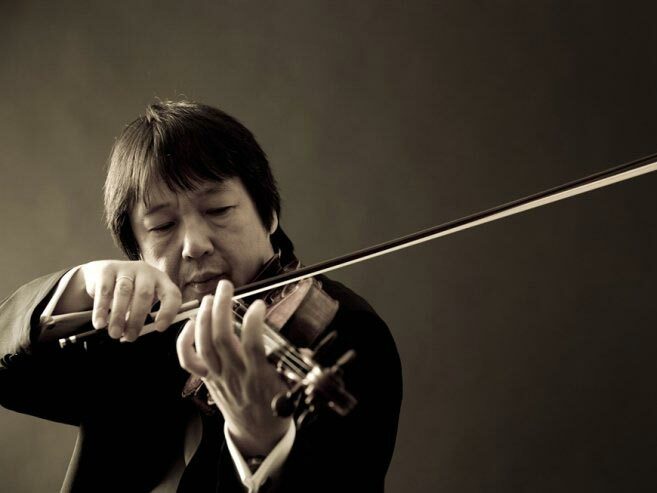
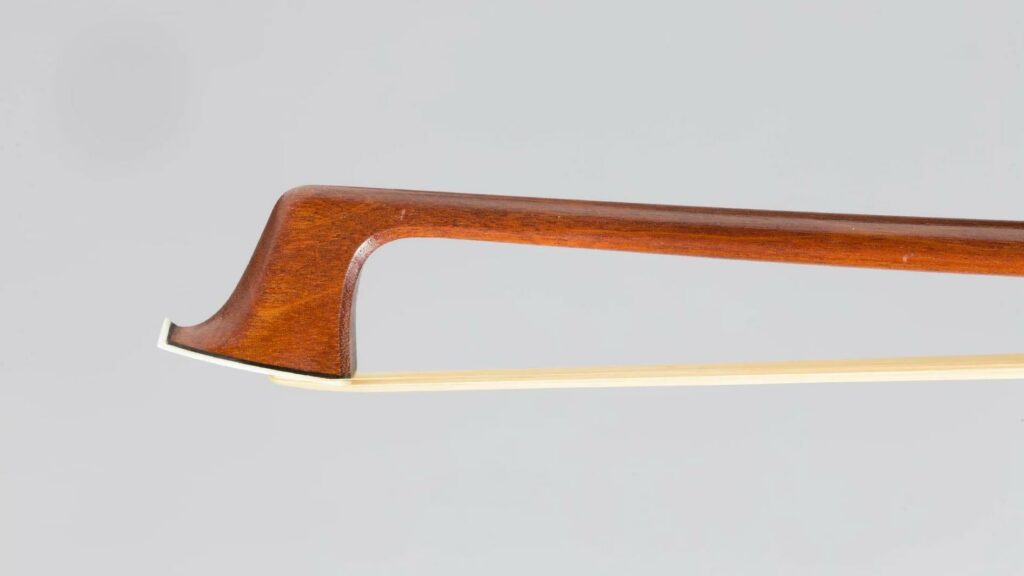
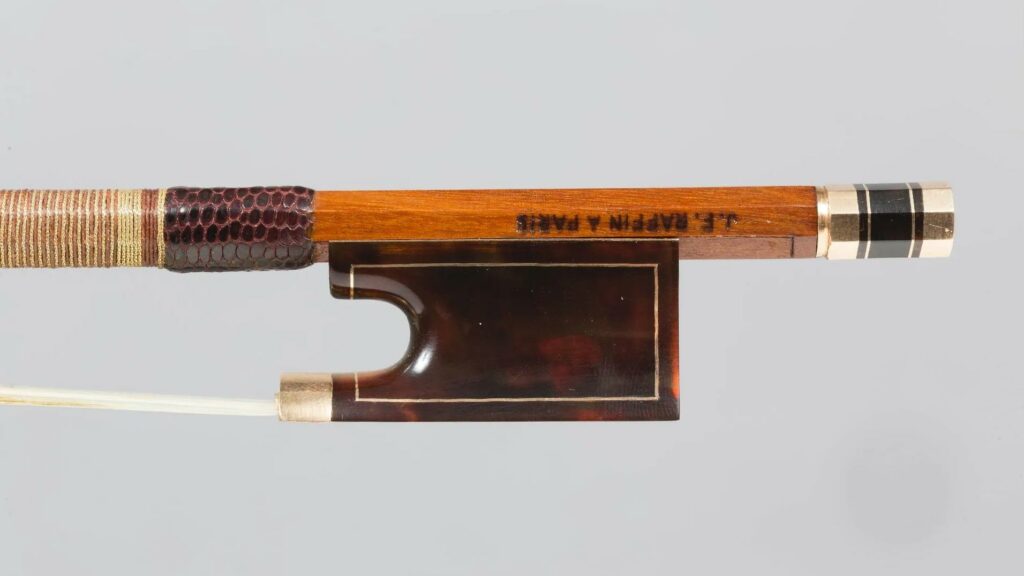
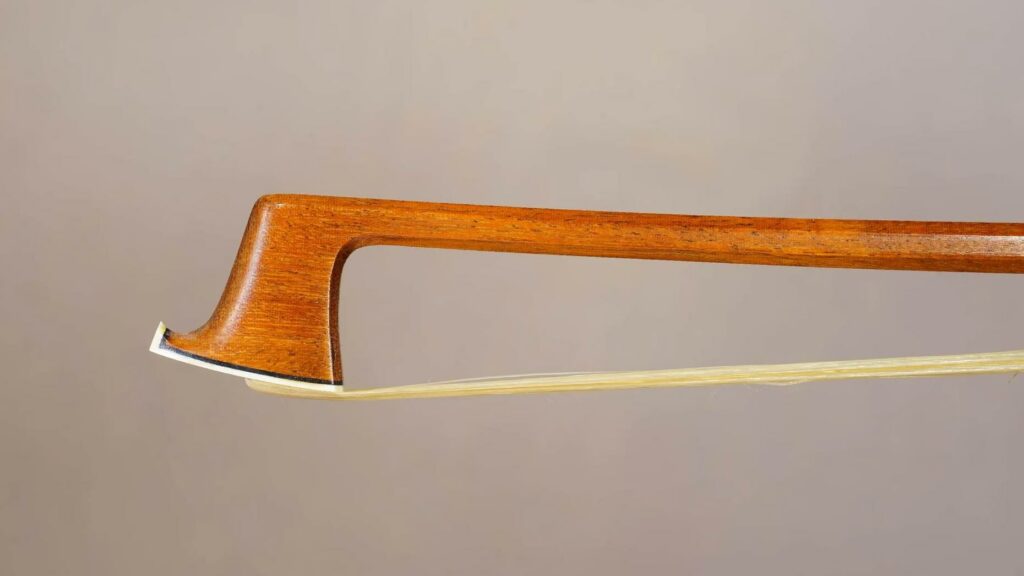
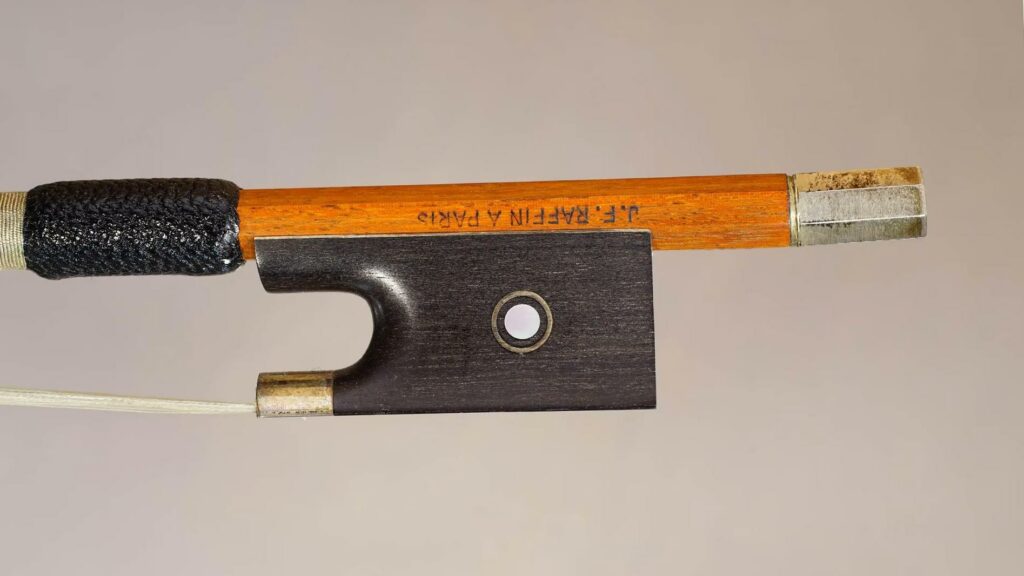
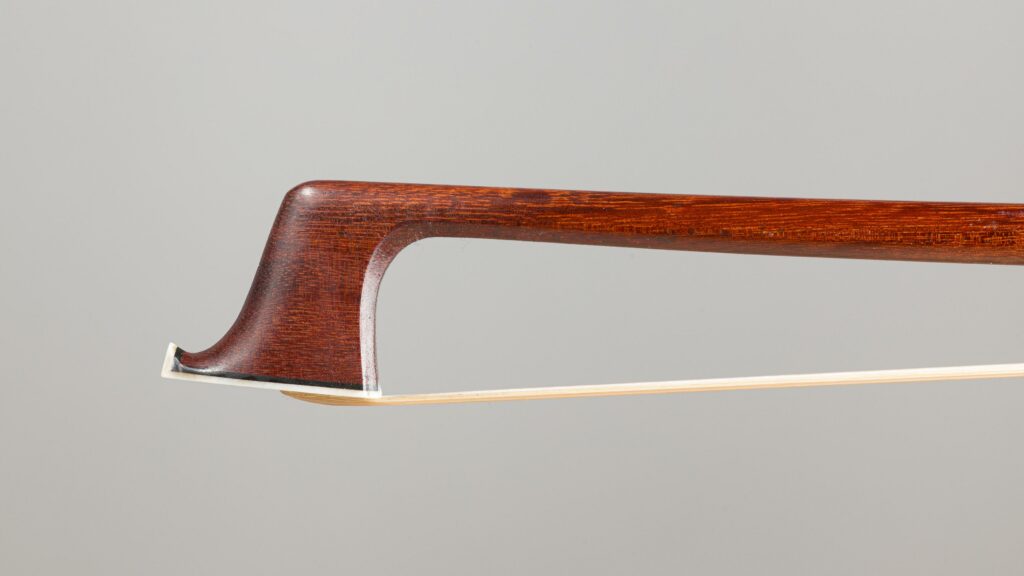
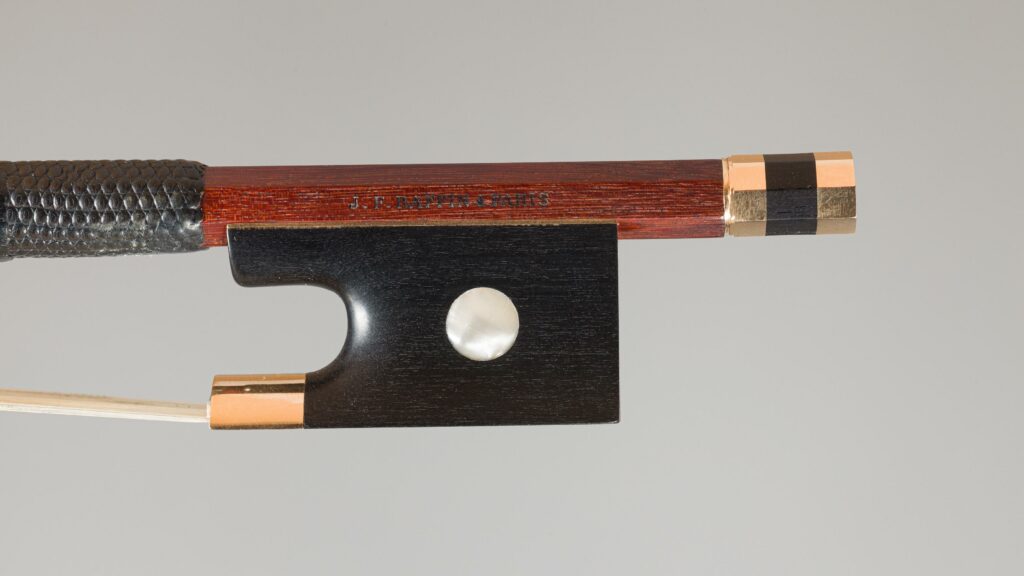
Bernard Millant est aussi à l’origine du travail d’expert de Jean-François Raffin qui, dès son arrivée dans l’atelier, a été abreuvé d’informations concernant l’histoire de l’archèterie, ses époques et écoles, styles et foyers de fabrication, lui fournissant de solides bases d’expertise. Millant le forma également en mettant au point un jeu consistant à deviner l’auteur d’un archet à partir de seulement un détail, obligeant l’œil à se focaliser sur qu’une partie.
“Au bout de dix ans chez lui, il m’avait quasiment tout transmis de son savoir et il ne me restait plus qu’à continuer à progresser sur mon propre chemin car, même avec la meilleure des volontés, il ne pouvait tout m’apporter.”
C’est dans les années 1780 que Bernard Millant, qui avait entièrement confiance en l’expertise de Raffin et beaucoup moins en son acuité visuelle, commença à lui demander son avis à propos des archets qu’il projetait d’acquérir. Il joua ainsi un rôle actif dans l’établissement de la collection de Millant.
En 1989, Jean-François Raffin est contraint de quitter l’atelier de Bernard Millant, lors de sa succession à Véréna et Loïc Le Canu. Il n’était pas envisageable qu’il rachète l’entreprise,- ce dernier ne disposant pas des moyens financiers nécessaires. Raffin s’installe donc à son compte au 68 rue de Rome, dans un tout petit local, et bénéficie tout de suite d’une grande notoriété. Quelques années plus tard, il a l’idée de rédiger une somme de connaissances sur l’archèterie française, mettant à contribution Bernard Millant.
“Pour moi, Bernard Millant a été le plus grand expert archetier du XXe siècle. […] Bernard a su placer l’archèterie à un niveau qui n’avait jamais été atteint et il a réussi à faire reconnaître l’archet en tant qu’entité propre et, dans certains cas, aussi importante que le violon lui-même. Tous les grands musiciens s’accordent désormais pour l’affirmer. L’occasion m’a été donnée de le remercier pour tout ce qu’il avait fait, en lui proposant de se joindre à nous pour la rédaction de “L’Archet” […]”.
Rédigé en quatre volumes durant plus de cinq années de travail, cet ouvrage rencontre dès sa sortie un succès international et fait aujourd’hui figure de référence dans ce champ de la recherche. Avec la contribution de Bernard Gaudfroy et Loïc Le Canu, le livre met en exergue les qualités techniques et esthétiques de l’école française d’archèterie depuis le milieu du XVIIIème siècle, reposant sur plus de 110 portraits d’archetiers. Le rôle de Raffin était considérable puisqu’il était responsable de la rédaction de toutes les biographies et de la remise en état d’une centaine d’archets.
Son expertise l’a amené à enseigner dans diverses écoles, en particulier à l’École de Lutherie ELAN de Québec durant trois ans, dans les années 1990. En 1994, il tient sa première conférence à Colmar, devant les Groupements des Luthiers français et allemands, amorçant le début d’une série de nombreuses autres interventions à travers le monde. Sa renommée s’étend encore davantage à l’occasion du congrès de l’Entente Internationale des Luthiers et Archetiers (EILA) de Bâle, où il est nommé aux côtés de Jean Jacques Rampal, l’amenant à assurer des conférences et à participer à des collaborations dans de nombreux pays, tels qu’aux États-Unis, Japon, Corée, Suisse et Allemagne.
Rue de Rome, la place ne lui permettait pas de travailler convenablement les instruments du quatuor à cordes. L’établi était en effet si étroit qu’il était compliqué de “raboter une touche de violoncelle sans être obligé de placer celui-ci en position oblique” par rapport au plan de travail. C’est la raison, certes prosaïque, pour laquelle il se consacra uniquement à l’archèterie – admettons que ce choix lui réussit.
Héritier d’un noble savoir-faire respectant la tradition de l’archèterie française, il lui tint alors à cœur de transmettre l’enseignement qu’il avait lui-même reçu, mais d’après ses propres méthodes de transmission. Il enseigna ainsi l’histoire de l’archèterie en suivant une ligne directrice, étudiant successivement chaque auteur et école, de manière logique, se défendant de tout évoquer en même temps, afin que les informations restent compartimentées et ne se mélangent pas – comme il avait pu en faire l’expérience déstabilisante à son arrivée chez Millant.
De cette manière, il transmit ses connaissances et son savoir-faire à une multitude d’assistants venus du monde entier, tels que Koachi Fukuda, Markus Wörtz, André lavoie, sa fille Sandrine, Agnès Saumagne, Jean-Luc Tauziède, Gaëtan Dariel, Arthur Dubroca, Alexandre Aumont, Boris Fritch, Yoshiko Shimané, Tibor Kovac’, Jeong Bong Lee, Sophie Balay, Richard Morency, Alexis Bonnet et bien sûr Sylvain Bigot qui devint son assistant :
“Je lui [Sylvain Bigot] ai donc enseigné tout ce que je pouvais dans le domaine de la restauration, l’expertise et même de bonnes bases de la conception d’un archet. Mais rapidement, ses compétences dans le domaine de la fabrication d‘archets étant devenues supérieures aux miennes, je lui ai suggéré de se perfectionner auprès d’un très bon collègue”.
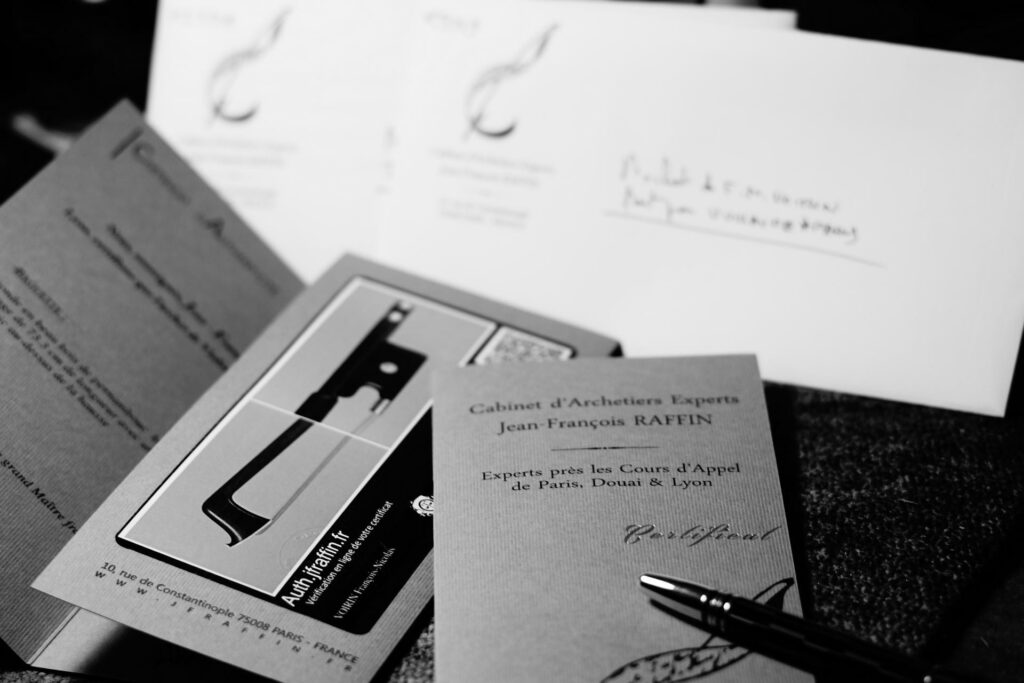
En 1996, il est reçu expert près la Cour d’Appel de Paris et voyage dès le début des années 2000 à Tokyo et Séoul, chez Mineo Matsuo, pour expertiser des archets. En 2007, Jean-François Raffin revend une partie de son entreprise à sa fille Sandrine pour se consacrer exclusivement aux expertises et s’établit alors Place de Paris. Sa réputation est tout de suite incontestable et est un gage d’authenticité à l’international. A cette époque, son atelier emploie jusqu’à neuf collaborateurs, dont deux secrétaires. Anecdotique mais symbole d’une carrière d’expert qui s’annonce prometteuse, le premier certificat qu’il réalise concerne un très bel archet de Dominique Peccatte. En 2012, alors qu’il fait le choix de s’associer à Sylvain Bigot et Yannick Le Canu, il compte à son actif plus de 25.000 certificats d’expertise rédigés.
“A ce jour, il s’agit de près de 40.000 expertises réalisées seul ou avec mes associés, et c’est assez incroyable à constater et à annoncer !”
En 2012, Jean-François Raffin s’associe à son ancien assistant Sylvain Bigot, qu’il a formé, et à son ami Yannick Le Canu. Cette association donne naissance au Cabinet d’Archetiers Experts Jean-François Raffin, implanté rue de Constantinople, réalisant des expertises partout dans le monde, de Lucerne à Cologne, de Los Angeles à San Francisco, etc.
En 2022, Raffin estimait à 16.000 le nombre de certificats d’expertise co-signés avec Sylvain Bigot et Yannick Le Canu depuis le 1er février 2012. Comme le souligne Raffin, ce travail n’est pas toujours facile car les trois experts ont convenu dès l’origine de n’établir de certificat qu’à la condition qu’ils soient tous d’accord.
“Aujourd’hui, nous formons une équipe tout à fait cohérente dont les membres sont très complémentaires. J’ai à présent la certitude que grâce à notre association, nous avons dépassé – et ce depuis un certain temps – les compétences de Bernard Millant.”
C’est à partir de 1995 que débute la collaboration de Jean-François Raffin avec Vichy Enchères, à l’époque dirigée par Guy Laurent. Les trois premières ventes furent expertisées avec Serge Boyer, avant que Raffin ne prenne son indépendance en décembre 1996, alors que Jean-Jacques Rampal venait d’être nommé expert indépendant en lutherie. Cette collaboration se poursuivit lorsque Etienne Laurent prit la direction de l’Hôtel de Ventes en 2010, et après que Jean-François Raffin se soit associé à Sylvain Bigot et Yannick Le Canu en 2012.
Comme ils le reconnaissent, ces ventes sont une véritable aubaine puisqu’elles permettent d’étudier des milliers d’archets chaque année, dont des pièces d’exception.
“Il s’agit d’enregistrer chaque archet (cinq cents par vente) afin de pouvoir le décrire et ensuite en préparer le certificat d’expertise (…) Après, nous délivrons un certificat pour chaque archet adjugé, ce qui est exceptionnel et n’existe quasiment pas dans les autres ventes d’instruments ou d’archets.”
En 2017, alors que Bernard Millant était très malade, il confia à Jean-François Raffin le souhait de disperser sa collection d’archets à Vichy Enchères :
“Aide ma fille, s’il te plaît, et mets tous mes archets à Vichy !”
Un vœu qui fut respecté puisque les archets de sa collection furent vendus sur trois ans, à l’occasion de ventes rassemblant des musiciens et collectionneurs du monde entier venus rendre hommage à Bernard Millant.
“S’il existe un paradis des archetiers, je souhaite, cher Bernard, que tu aies pu y accéder, au milieu d’une forêt de très beaux archets, et y être accueilli auprès des plus grands maîtres de notre métier”
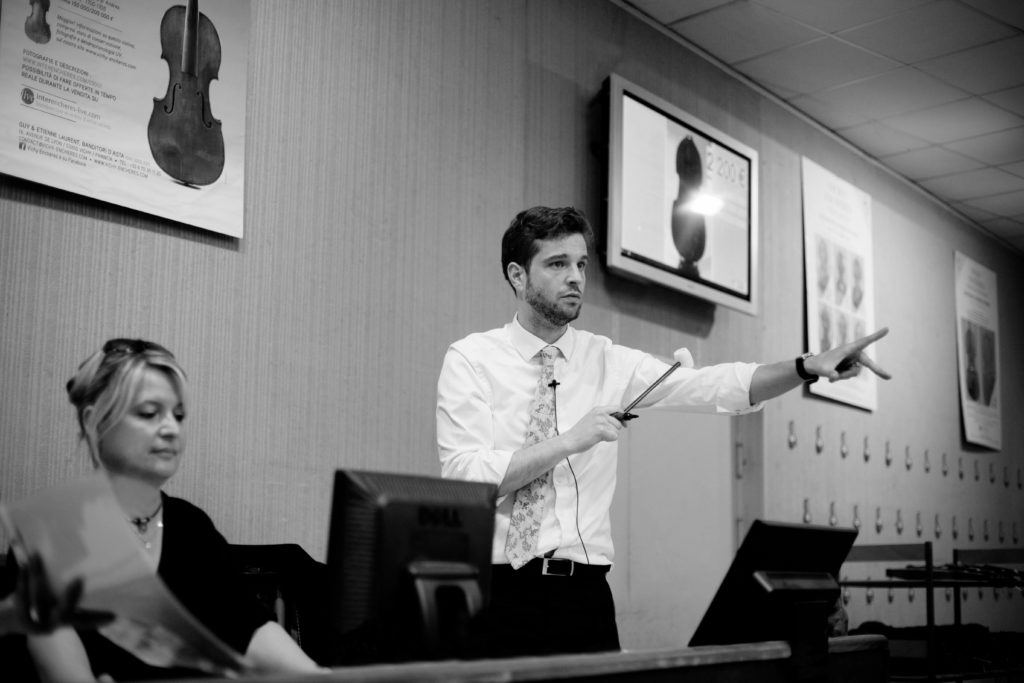
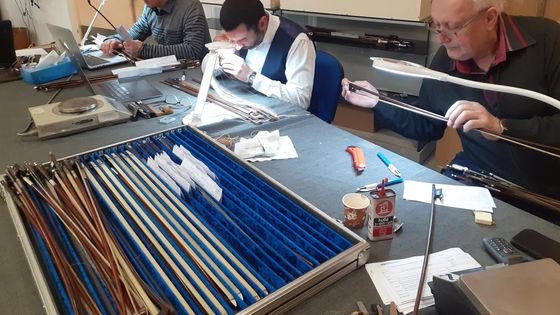
Après plus de 50 années en tant qu’expert archetier et une retraite partielle durant laquelle il a continué à aider les musiciens, Jean-François Raffin est sur le point de prendre une retraite bien méritée. La vente du 30 novembre 2023 est ainsi l’occasion de lui rendre hommage, mais aussi de le remercier pour tout ce qu’il a fait pour Vichy Enchères et de lui témoigner notre reconnaissance et haute estime. Comme un clin d’œil à sa carrière, un archet de ses mains mettra un beau point d’orgue à cette collaboration durant cette ultime vente !
On the eve of his retirement, the entire Vichy Enchères team wanted to pay tribute to Jean-François Raffin, with whom the auction house has collaborated since 1995. Jean-François Raffin had a 50-year long career, first as a violin maker, then as a bow maker, before focusing exclusively on expertise – enjoying success and fortune throughout. Jean-François Raffin is internationally renowned as a bow expert, and is a worthy heir to French bow making, having studied under Bernard Millant for 17 years. On 30 November 2023, during our sale of fine string instruments, a bow by Jean-François Raffin will be auctioned; it is one more reason to look back at the exceptional career of this man, who remained humble despite his success.
It was while learning classical guitar that Jean-François Raffin realized he wanted to become a violin maker.


At the time, the only route into violin making was to train with a master by joining his workshop, which was not easy – the Mirecourt violin makers only took on a few apprentices. It was thanks to Jacques Camurat that the young Jean-François finally managed, after several unanswered letters, to find a place as an apprentice at Apparut et Hilaire, rue Sainte-Cécile, which was then managed by Paul Hilaire’s widow. Although it was guitar making he had in mind, he actually learned to make string quartet instruments, which he thoroughly enjoyed. Jean Eulry, the head of workshop, became his master, and Jean-François Raffin was always grateful to him. During this apprenticeship, he worked alongside four other apprentices, Berend Möller, Jean-Jacques Pages, Thomas Jansen and Patrice Taconné. Berend Möller was the son of Max Möller, the most important violin maker in the Netherlands. He had s good relationship with Jean-François, and, one day, introduced him to his father, who saw his talent and commissioned from him three miniature bows with tortoiseshell and gold frog and button, in copy of Peccatte, Tourte and Vuillaume, which are now missing following a theft.
Jean Eulry had a significant influence on the career of Jean-François Raffin, both in terms of his technique and the way he approached his profession. In particular, the following words from his master left a mark on his professional journey:
“Always stay in your place, it’s the best you can do in your job and throughout your life!”
Jean Eulry
His entire professional career was influenced by the teachings of Eulry and his personal relationship with him. At that time, Jean Eulry was one of the best violin makers of his generation, and Parisian houses snapped up his instruments in the white to sell them as their own.
His apprenticeship came to an end in July 1971 and Raffin left Mirecourt for Paris, joining the workshop of Etienne Vatelot thanks to Eulry, who saw him as one of his best apprentices.
As a testimony of the personal and professional esteem in which Eury held Raffin, the former bequeathed his violin making planes to his former pupil upon his death, at his request – planes that Raffin recently entrusted to the Mirecourt museum to ensure their future conservation.
“For me, he was a deeply human and very generous person! He helped me achieve my dream, to become a violin maker, and allowed me to flourish in the best possible conditions! As a result, I left him with a heavy heart.”
Jean-François Raffin




One month before the end of his apprenticeship, in June 1971, Jean-François Raffin enrolled in the CAP (vocational qualification) in violin making, which was open for the first time to violin making apprentices.
He and his friend Philippe Bodart were the only two candidates in all of France to apply for the qualification.
They were both admitted, and are the first two violin making apprentices in history to graduate from Mirecourt.
In September 1971, Jean-François Raffin went to the capital to take up a coveted place in the workshop of Etienne Vatelot. Unsurprisingly, the modus operandum of that workshop was completely different from that of Apparut-Hilaire’s. The master was much less present in the workshop, and it was not possible to observe him at work whenever you wanted, which became disconcerting for Jean-François, who was used to the working practices of Jean Eulry. In addition, the atmosphere was less relaxed, more austere.


However, this work at Vatelot’s was very useful, as it allowed him to come into contact with a large number of renowned musicians.
“Another type of situation was difficult for me in this house: when a great musician accompanied Etienne into the workshop, no one dared to move, and you could have heard a pin drop! […] It was unpleasant and not easy for me to live with! On the other hand, having the chance to meet the greatest musicians of that time was something unique […] I have great memories of having met some of them, like Igor Oistrakh or Yehudi Menuhin, whose humility was remarkable, but also Maurice Gendron [ …] Regarding Maurice Gendron, I just remembered that Etienne asked me to repair the head of his silent cello, [he] was very satisfied with its transformation [and he gave him a written note that read]: “For Jean-François Raffin, who knows how to make silent cellos sound.”
Despite the prestige associated with the position at Etienne Vatelot’s, and the opportunities it brought with it, Jean-François Raffin decided to stay only one year there, after which he joined Bernard Millant.
A few years after leaving Etienne Vatelot, the latter awarded him the Prix de la Couronne Francaise, at an evening organized at the Pavillon d’Armenonville, in the Bois de Boulogne. Jean-François Raffin was unanimously elected, and then sat at the head table, accompanied by high-ranking personalities, such as H.L. King Fouad of Egypt, H.M. Queen Fadila and Baron and Baroness Hottinguer.
On this occasion, Etienne Vatelot also expressed his esteem for him, despite the fact that he left him in somewhat difficult circumstances:
“I present to you the candidacy of Jean-François Raffin, a very good bow maker working for my colleague Bernard Millant in Paris! He is neither a family member nor a friend of mine; he is simply an excellent craftsman, very deserving and whose work is of the highest standard!”
Etienne Vatelot
If Etienne Vatelot emphasised that his relationship with Jean-François Raffin was purely professional, it is because it was customary for the winners to be either friends or family members of the jurors.

After only six months with Etienne Vatelot, Jean-François Raffin asked Bernard Millant, who he knew well, for a position. He offered him one for September 1972, and so Raffin left Vatelot then, after just one year working alongside him. At Millant’s, he was able to train in bow making and discover new tools and materials, such as pernambuco wood, which is much harder to work than spruce or maple. However, it took four or five years before he was allowed to even make copies of frogs or to replace the damaged bottoms of sticks.
Jean-François Raffin expressed his desire to make a bow of his own creation while watching Bernard Millant work all that time. One day, he decided to buy a few sticks from Roger Gérôme and began making his first bows. It was the beginning of a great and long story, in which he gradually improved and gained recognition, including early on by winning the silver medal in the competition for the Meilleurs Ouvriers de France in 1979 (despite having limited experience then).


After spending 17 years in Bernard Millant’s workshop, Raffin had accumulated a wealth of knowledge, which allowed him to create bows sought after by many musicians, including Philippe Muller – whose Raffin bow he uses exclusively – Roland Daugareil, Michel Strauss, Pierre-Yves Lamarca, Suzanne Ramon and Dong-Suk Kang. He also made two quartets of bows with tortoiseshell and gold frogs, one for his friend Jean-Yves Rouveyre, the other for his dear colleague Roland Baumgartner.
“For this second one, I decorated their frog with gold purfling, which was a very difficult task!”
As a thank you and a testimony of his gratitude, Jean-François Raffin created a bow specially designed for Bernard Millant, which was auctioned during the sale of his collection at Vichy Enchères in 2017. On 30 November 2023, an interesting viola bow by Jean-François Raffin, made around 2000 and signed “J.F. Raffin a Paris”, will be auctioned in Vichy. It is gold mounted and a fine example of the craftsmanship inherited directly from the pure tradition of French bow making.
“Recently, I have also realized that I have inherited a large part of the history of French bow making, from its rise (from 1750) to Bernard Millant who passed it on to me.”








Bernard Millant can also be credited with kick-starting Jean-François Raffin’s career as bow expert. From the minute he set foot in his workshop, he fed him with information on the history of bow making, its periods and schools, its styles and making centres, giving him strong foundations for his work as an expert. Millant also trained him by playing a game which consisted of guessing the maker of a bow based solely on one detail, forcing his eye to focus on just one element.
“After 10 years with him, he had passed on almost all of his knowledge to me, and all I had to do was to continue to progress on my own path because, even with the best of intentions, he could not give me everything. »
It was in the 1980s that Bernard Millant, who had complete confidence in Raffin’s expertise and much less in his own visual abilities by then, began to ask his opinion about the bows he was planning to acquire. He therefore played a major part in building Millant’s collection.
In 1989, Jean-François Raffin was forced to leave the workshop of Bernard Millant, at the time when Véréna and Loïc Le Canu succeeded him. It was not possible for him to acquire the company, as he did not have the necessary means. Raffin therefore set up on his own at 68 rue de Rome, in very small premises, and immediately met with success. A few years later, he had the idea of writing a body of work on French bow making, and to involve Bernard Millant.
“For me, Bernard Millant was the greatest expert bow maker of the 20th century. […] Bernard was able to take bowmaking to a level that had never been reached before, and he succeeded in raising the profile of the bow as an instrument in itself and, in some cases, as one which was as important as the violin. All the great musicians now concur with this view. Asking him to join us in writing “L’Archet” was my opportunity to thank him for everything he had done […].”
Composed of four volumes which represent over five years of work, this publication met with international success upon its release and is, to this day, a reference in this field of research. With contributions from Bernard Gaudfroy and Loïc Le Canu, the book highlights the technical and visual characteristics of the French school of bow making since the mid-18th century, based the history of over 110 bowmakers. Raffin’s role was significant, since he was responsible for writing all the biographies.
His expert knowledge led him to teach in various schools, in particular the ELAN Violin Making School in Quebec for three years in the 1990s. In 1994, he held his first conference in Colmar, in front of the French and German Groupements des Luthiers, which signalled the start of his participation in a number of events worldwide. His reputation rose even further after the conference of the Entente Internationale des Luthiers et Archetiers (EILA) in Basel, in which he took part alongside Jean Jacques Rampal; this led him to conferences and projects in many countries, including the United States, Japan, Korea, Switzerland and Germany.
His workshop on rue de Rome did not allow him to work properly on the instruments of the string quartet. The workbench was in fact so narrow that you had to “place cello fingerboards in a diagonal position [relative to the work surface] in order to shoot them”. This is the, rather practical, reason why he devoted himself solely to bow making – a decision that turned out to be very successful indeed. He inherited the knowledge and tradition of French bow making, and was keen to pass on the teaching he had himself received, but using his own methodology. Therefore, he taught the history of bow making following a guideline, studying each maker and school in succession, in a logical manner, and refraining from discussing everything at once, so that the information remained compartmentalized, and not mixed up as he had experienced when he arrived at Millant.
Following this methodology, he passed on his knowledge and techniques to a number of assistants from all over the world, including Koachi Fukuda, Markus Wörtz, André Lavoie, his daughter Sandrine, Agnès Saumagne, Jean-Luc Tauziède, Gaëtan Dariel, Arthur Dubroca, Alexandre Aumont, Boris Fritch, Yoshiko Shimané, Tibor Kovac’, Jeong Bong Lee, Sophie Balay, Richard Morency, Alexis Bonnet and of course Sylvain Bigot, who became his assistant:
“I taught him [Sylvain Bigot] everything I knew regarding restoration, expertise and even basic bow making skills. But quickly, his bow making skills surpassed mine, and I suggested that he perfect them with a very good colleague.”

In 1996, he became an expert to the Paris Court of Appeal, and in the early 2000s travelled to Tokyo and Seoul, to Mineo Matsuo, to appraise bows. In 2007, Jean-François Raffin sold part of his business to his daughter Sandrine to devote himself exclusively to expertise, and moved to Place de Paris in the process. His reputation is of the highest order and his certificates are a guarantee of authenticity worldwide. At that time, his workshop employed up to nine people, including two secretaries. Though anecdotal, the first certificate he produced related to a very beautiful bow by Dominique Peccatte, announcing a promising career as an expert. In 2012, when he chose to join forces with Sylvain Bigot and Yannick Le Canu, he had more than 25,000 certificates of authenticity to his name.
“To date, there have been nearly 40,000 authentications carried out by me alone or with my associates, and that is quite remarkable to see and announce!”
In 2012, Jean-François Raffin joined forces with his former assistant Sylvain Bigot, whom he trained, and his friend Yannick Le Canu. This association gave birth to the Cabinet d’Archetiers Experts Jean-François Raffin, situated on rue de Constantinople, and which carried out expert assessments all over the world, from Lucerne to Cologne, Los Angeles to San Francisco, etc.
In 2022, Raffin estimated at 16,000 the number of certificates co-signed with Sylvain Bigot and Yannick Le Canu since 1 February 2012. As Raffin points out, this work is not always easy because the three experts agreed early on to only issue certificates provided they were all in agreement.
“Today, we are a strong and cohesive team whose members complement each other. I am now convinced that, thanks to our association, we have surpassed – and this for some time – the abilities of Bernard Millant.”
Jean-François Raffin’s collaboration with Vichy Enchères began in 1995, when the auction house was managed by Guy Laurent. The first three sales were appraised with Serge Boyer, before Raffin became independent in December 1996, as Jean-Jacques Rampal had just been appointed independent violin making expert. This collaboration continued when Etienne Laurent took up the reins of the auction house in 2010, as well as after Jean-François Raffin joined forces with Sylvain Bigot and Yannick Le Canu in 2012. As they admit themselves, these sales were a real godsend as they allowed them to examine thousands of bows each year, including exceptional pieces.
“It involves cataloguing each bow (500 per sale) in order to have sufficient information to describe them and then prepare certificates (…) After the auction, we issue a certificate for each bow sold, which is exceptional and almost unheard of in sales of this type.”
In 2017, when Bernard Millant was very ill, he confided to Jean-François Raffin that he wished to sell his collection of bows at Vichy Enchères:
“Help my daughter, please, and put up all my bows for sale in Vichy!”
His wish was granted and the bows from his collection were sold over a period of three years, during sales bringing together musicians and collectors from around the world, who came to pay tribute to Bernard Millant.
“If there is a bowmaker’s paradise, I hope, dear Bernard, that you were able to reach it, in the middle of a forest of very beautiful bows, and be welcomed there alongside the greatest masters of our profession.”


After more than 50 years as an expert bow maker and a semi-retirement during which he continued to help musicians, Jean-François Raffin is about to take his well-deserved retirement. The sale on 30 November 2023 is therefore an opportunity to pay tribute to him, but also to thank him for everything he has done for Vichy Enchères, and to show him our tremendous gratitude and esteem. As a nod to his career, a bow by his hand, included in his final sale, will act as a beautiful climax to this collaboration!